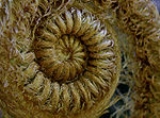
Pulu
Encyclopedia

Cibotium
Cibotium is a genus of eleven species of tropical tree fern—subject to much confusion and revision—distributed fairly narrowly in Hawaii , Southeast Asia , and the cloud forests of Central America and Mexico...
(Cibotium glaucum), a tree fern of Hawaii
Hawaii
Hawaii is the newest of the 50 U.S. states , and is the only U.S. state made up entirely of islands. It is the northernmost island group in Polynesia, occupying most of an archipelago in the central Pacific Ocean, southwest of the continental United States, southeast of Japan, and northeast of...
. It is made of the brown hairs that cover the young fiddlehead
Fiddlehead
Fiddleheads or Fiddlehead greens are the furled fronds of a young fern, harvested for use as a vegetable. Left on the plant, each fiddlehead would unroll into a new frond...
as it uncoils.
Ancient Hawaii
In ancient HawaiiAncient Hawaii
Ancient Hawaii refers to the period of Hawaiian human history preceding the unification of the Kingdom of Hawaii by Kamehameha the Great in 1810. After being first settled by Polynesian long-distance navigators sometime between AD 300–800, a unique culture developed. Diversified agroforestry and...
, pulu (which means "wet" in the Hawaiian language
Hawaiian language
The Hawaiian language is a Polynesian language that takes its name from Hawaii, the largest island in the tropical North Pacific archipelago where it developed. Hawaiian, along with English, is an official language of the state of Hawaii...
) was used to embalm the dead.
Women used pulu as an absorbent during their menstrual cycle
Menstrual cycle
The menstrual cycle is the scientific term for the physiological changes that can occur in fertile women for the purpose of sexual reproduction. This article focuses on the human menstrual cycle....
. When their time came around, they were isolated to a house called hale pea or menstrual house. Men were strongly discouraged to set foot on the grounds of the hale pea, by strict social custom known as kapu
Kapu
Kapu refers to the ancient Hawaiian code of conduct of laws and regulations. The kapu system was universal in lifestyle, gender roles, politics, religion, etc. An offense that was kapu was often a corporal offense, but also often denoted a threat to spiritual power, or theft of mana. Kapus were...
.
Hawaiians organized the hapuu fern into two genders; male and female. Males had the tough pulu, and females had the soft pulu. All soiled pulu was then buried around the hale pea.
19th-Century industry
For a period in the 19th century, pulu was collected, dried, and exported to CaliforniaCalifornia
California is a state located on the West Coast of the United States. It is by far the most populous U.S. state, and the third-largest by land area...
commercially as pillow and mattress stuffing. A stone structure in Hawai'i Volcanoes National Park known as the Old Pulu Factory was a site for drying and packing pulu. However, the discovery that pulu breaks down and crumbles into dust after only a few years led to the demise of the industry. Pulu was collected by cutting down the slow-growing ferns, an extremely unsustainable method. The industry shut down by the 1880s.

